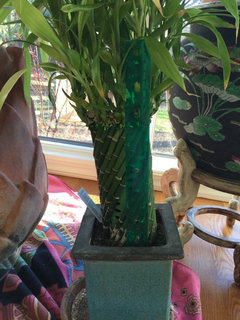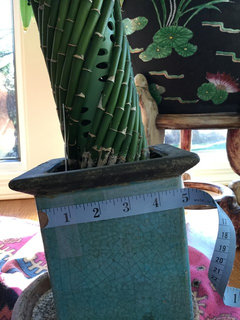Water to soil?
eileen_plants
16 years ago
Featured Answer
Comments (13)
luckybambooplant
16 years agolast modified: 9 years agoexoticrainforest
16 years agolast modified: 9 years agoRelated Professionals
East Patchogue Landscape Contractors · Oviedo Landscape Contractors · Pompton Lakes Landscape Contractors · Stony Brook Landscape Contractors · Silver Firs Landscape Contractors · Maple Heights Landscape Contractors · Westland Driveway Installation & Maintenance · Dorchester Center General Contractors · Florida City General Contractors · Gloucester City General Contractors · Havelock General Contractors · Ken Caryl General Contractors · Lincoln General Contractors · New Baltimore General Contractors · Port Saint Lucie General Contractorsflower_crazed
15 years agolast modified: 9 years agoevonnestoryteller
15 years agolast modified: 9 years agoevonnestoryteller
15 years agolast modified: 9 years agoLbamboo101
11 years agolast modified: 9 years agoFlorida_Joe's_Z10a
11 years agolast modified: 9 years agonewbie389
8 years agoTamiya #1 (AU, SG, MY & ZZZzzzz...)
8 years agonewbie389
8 years agopurslanegarden
8 years agoTamiya #1 (AU, SG, MY & ZZZzzzz...)
8 years ago
Related Stories

LANDSCAPE DESIGNHow to Shape a Rain Garden and Create the Right Soil for It
Learn how to grade, lay out and amend the soil in your rain garden to support your plants
Full Story
LANDSCAPE DESIGNFlood-Tolerant Native Trees for Soggy Soil
Swampy sites, floodplains, even standing water ... if you've got a soggy landscape, these trees are for you
Full Story
GARDENING GUIDES10 Solutions for Soggy Soil
If a too-wet garden is raining on your parade, try these water-loving plants and other ideas for handling all of that H2O
Full Story
GARDENING GUIDESGreat Design Plant: Try Blue Bells for Blooms in Dry Soil
This shrub’s violet-blue flowers and silvery foliage brighten low-water gardens all year long
Full Story
GARDENING GUIDESGardening Solutions for Dry, Sandy Soils
Has your desert or beachy site withered your gardening creativity? Try these ideas for a beautiful, easy-care landscape
Full Story
GARDENING GUIDESThe Poop Scoop: Enrich Your Soil With Good Old Manure
Get over the ick factor already — this natural super-ingredient for soil has so many benefits, you'll wonder why you ever went chemical
Full Story
GARDENING GUIDESGrow a Beautiful Garden in Alkaline Soil
Got alkaline soil? Learn how to manage it and the many beautiful plants that will thrive in this ‘sweet’ soil
Full Story
GARDENING GUIDESGardening Solutions for Heavy Clay Soils
What’s a gardener to do with soil that’s easily compacted and has poor drainage? Find out here
Full Story
GARDENING GUIDESGet the Dirt on Your Garden’s Soil
Understand how your soil supports your plants so you can ensure your garden’s success
Full Story
GARDENING GUIDESHow to Stop Worrying and Start Loving Clay Soil
Clay has many more benefits than you might imagine
Full StorySponsored
Franklin County's Full Service, Turn-Key Construction & Design Company









penwords